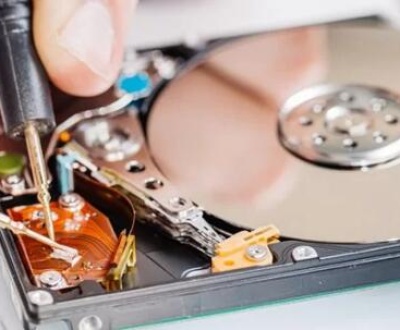Permanently deleting files on a PC without leaving any trace that they can be recovered involves a combination of methods to ensure that the data is irretrievable. This process is essential for protecting sensitive information from unauthorized access or for ensuring privacy when selling or disposing of a computer. Here’s a comprehensive guide to help you achieve this:
1. File Deletion
When you delete a file on your PC, it typically goes to the Recycle Bin, and from there it is removed from view. However, the data still exists on the hard drive until it is overwritten by new data. This means that with the right tools, it may be possible to recover deleted files.
2. Basic File Deletion and Emptying the Recycle Bin
Deleting Files
Select Files: Open File Explorer and navigate to the files or folders you want to delete.
Delete: Right-click on the selected files and choose “Delete” or press the Delete key on your keyboard.
Emptying the Recycle Bin
Open Recycle Bin: Double-click the Recycle Bin icon on your desktop.
Empty Recycle Bin: Click on “Empty Recycle Bin” at the top of the window, or right-click on the Recycle Bin icon and select “Empty Recycle Bin.”
While this process removes files from view, the data remains on the hard drive and can be recovered with data recovery software.

3. Using Secure Deletion Tools
For permanent deletion, you need to overwrite the deleted files with random data to prevent recovery. Several tools are designed for this purpose:
3.1. Eraser
Download and Install: Go to the Eraser website and download the tool. Install it on your PC.
Configure: Open Eraser and set up a new task by specifying the file or folder you want to delete.
Choose a Method: Eraser offers several wiping methods, including the DoD 5220.22-M, which overwrites data multiple times.
Run Eraser: Execute the task to securely erase the selected files.
3.2. CCleaner
Download and Install: Visit the CCleaner website and download the tool.
Open CCleaner: Go to the “Tools” section and then select “Drive Wiper.”
Select Options: Choose “Free Space Only” or “Entire Drive” depending on your needs, and select the wiping method.
Start Wiping: Click on “Wipe” to begin the process.
4. Using Built-in Windows Tools
Windows has built-in tools for file and disk management that can help with permanent deletion:
4.1. Cipher Command
Open Command Prompt: Press Win + R, type cmd, and press Enter.
Use Cipher: Type cipher /w:C (where C is the drive letter you want to wipe) and press Enter. This command overwrites deleted data on the specified drive.
4.2. Disk Cleanup
Open Disk Cleanup: Type “Disk Cleanup” in the Start menu search bar and select it.
Select Drive: Choose the drive you want to clean.
Clean System Files: Click on “Clean up system files” and select the files you want to delete permanently.
5. Using File Shredding Software
File shredding software is designed to overwrite files and ensure that they cannot be recovered.
5.1. File Shredder Software
Download and Install: Choose a reputable file shredder program like File Shredder and install it.
Select Files: Open the software and add the files or folders you want to shred.
Shred Files: Start the shredding process, which will overwrite the files multiple times.
6. Securely Erasing an Entire Hard Drive
If you want to ensure that all data on a hard drive is permanently deleted, you can perform a full drive wipe.
6.1. Using Disk Wiping Software
Download and Install: Tools like DBAN (Darik’s Boot and Nuke) or Blancco are available for securely erasing hard drives.
Create Bootable Media: Follow the tool’s instructions to create a bootable USB or CD/DVD.
Boot from Media: Restart your PC and boot from the created media.
Select Wipe Method: Choose the wiping method (e.g., DoD 5220.22-M) and start the process.
6.2. Using Windows Reset
Open Settings: Go to Settings > Update & Security > Recovery.
Reset PC: Under “Reset this PC,” select “Get started” and choose “Remove everything.”
Advanced Options: You may choose to clean the drive thoroughly by selecting “Remove files and clean the drive.”
7. Securely Deleting Files from SSDs
Solid-State Drives (SSDs) operate differently from traditional Hard Disk Drives (HDDs), and data recovery can be more complex. Here’s how to handle SSDs:
7.1. Use Manufacturer’s Tools
Download Tools: Manufacturers like Samsung, Intel, and Crucial provide tools for secure erasing.
Run the Tool: Follow the instructions to perform a secure erase or SSD-specific wiping operation.
7.2. Use TRIM Command
Enable TRIM: Windows 10 and later versions automatically enable TRIM, which helps in maintaining SSD performance and secure deletion.
Verify: Open Command Prompt as an administrator and type fsutil behavior query DisableDeleteNotify. If it returns 0. TRIM is enabled.
8. Best Practices for Data Security
Regularly Backup: Regularly back up your data to prevent accidental loss.
Use Encryption: Encrypt sensitive files to add an additional layer of security.
Physical Destruction: For highly sensitive data, consider physically destroying the hard drive.
About us and this blog
Panda Assistant is built on the latest data recovery algorithms, ensuring that no file is too damaged, too lost, or too corrupted to be recovered.
Request a free quote
We believe that data recovery shouldn’t be a daunting task. That’s why we’ve designed Panda Assistant to be as easy to use as it is powerful. With a few clicks, you can initiate a scan, preview recoverable files, and restore your data all within a matter of minutes.
Subscribe to our newsletter!
More from our blog
See all postsRecent Posts
- Data recovery salt lake city utah 2025-04-18
- Data recovery sacramento 2025-04-18
- Data recovery miami 2025-04-18

 Try lt Free
Try lt Free Recovery success rate of up to
Recovery success rate of up to









